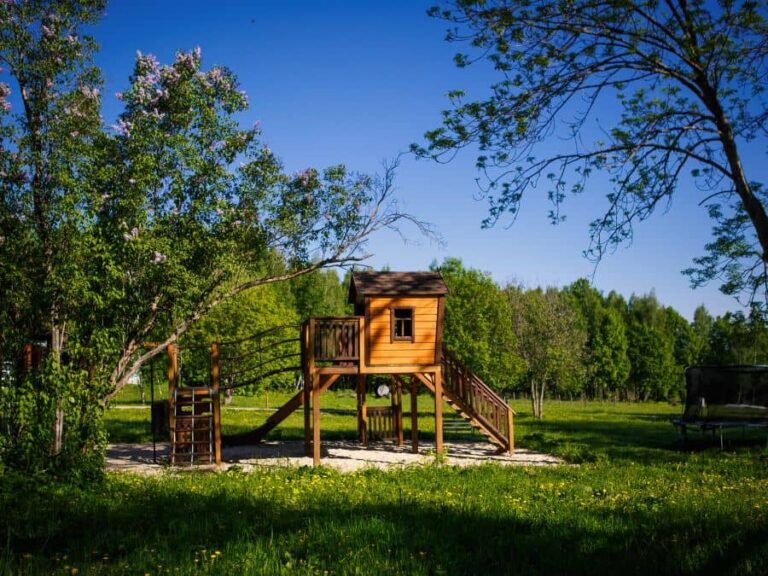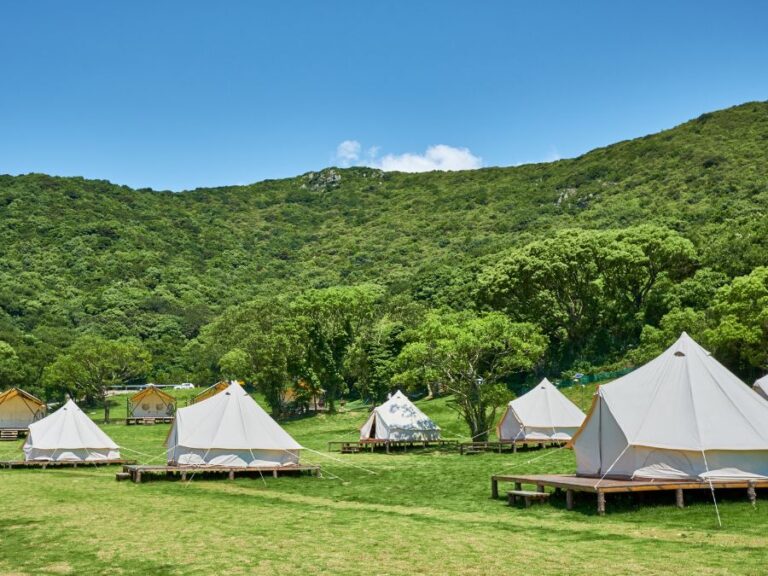A Hiker’s Guide to Wildlife In The Blue Ridge Mountains
Nestled in the Eastern United States, the Blue Ridge Mountains span across multiple states and provide stunning views and unique experiences for hikers. These mountains are named for their bluish-gray color that can be seen from a distance, which is caused by the release of volatile organic compounds from trees. The Blue Ridge Mountains are part of the Appalachian mountain range and are home to a variety of flora and fauna.
Discovering the Location
The Blue Ridge Mountains stretch through Virginia, North Carolina, Tennessee, Georgia and South Carolina. Each state boasts its own unique attractions for visitors to explore, but it’s their shared landscapes that offer some of the best hiking opportunities. The region is known for its scenic beauty with lush forests, cascading waterfalls, and panoramic views.

The Importance of Wildlife
Wildlife plays a crucial role in maintaining balance in any ecosystem; however, it is especially important in areas such as the Blue Ridge Mountains where conservation efforts have been underway for decades. In addition to preservation efforts aimed at protecting endangered species such as red wolves or peregrine falcons found in these mountains, there is also significant research being conducted on how wildlife interacts with their natural habitats.
Through such studies scientists are learning more about how certain wildlife species can affect an environment’s overall health – including everything from pollination patterns to soil health – making it clear why preserving these habitats remains so crucially important today. So whether you’re looking to spot black bears or admire seasonal wildflowers during a hike in one of America’s most scenic destinations – know that your journey through the beautiful mountainsides will undoubtedly be enhanced by encountering some of its impressive inhabitants!
Common Wildlife in the Blue Ridge Mountains
Black Bears
The Blue Ridge Mountains are home to a large population of black bears. These majestic creatures can weigh up to 600 pounds and are known for their distinctive black fur, as well as their keen sense of smell.
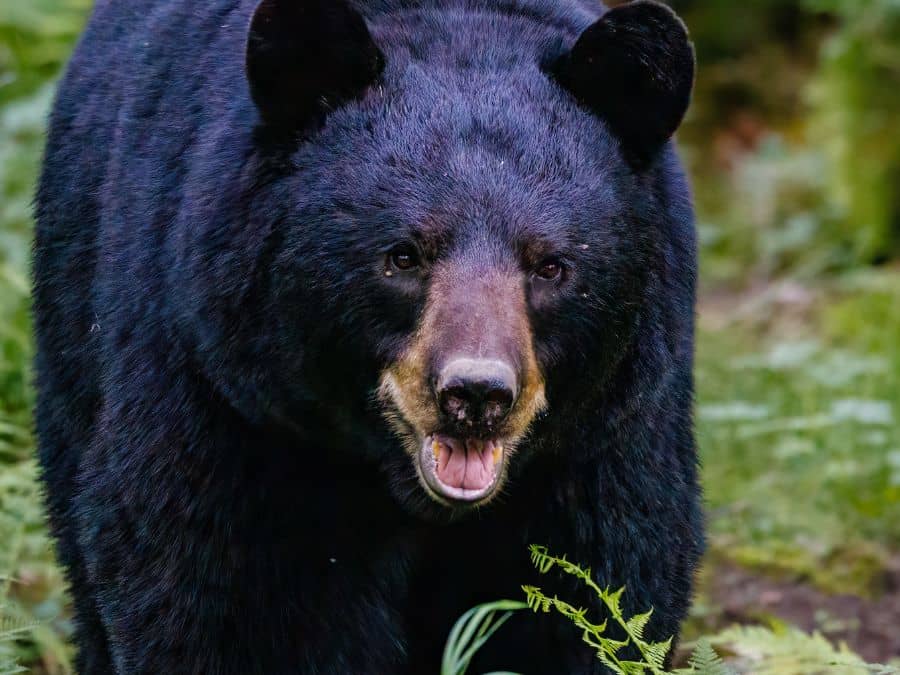
Black bears are typically active at dawn and dusk, so if you’re planning a hike, it’s best to go during those times to increase your chances of spotting one. While black bears may seem intimidating, they’re actually quite shy and will usually avoid humans if possible.
However, if you do encounter a bear while hiking in the Blue Ridge Mountains, it’s important to stay calm and give the bear plenty of space. Never approach or attempt to feed a bear, as this can lead to dangerous situations for both you and the animal.
White-Tailed Deer
Another common sight in the Blue Ridge Mountains is the white-tailed deer. These graceful creatures can be seen grazing in meadows or darting through forests throughout the region.

With their reddish-brown coats and distinctive white tails that flash when they run, white-tailed deer make for an enchanting sight when out on a hike. White-tailed deer are most active during early morning or late afternoon hours, so try scheduling your hike accordingly to increase your chances of spotting one.
If you do come across a deer while hiking in the Blue Ridge Mountains, remember that these animals can be easily frightened. Keep your distance and avoid sudden movements or loud noises that could scare them off.
Wild Turkeys
If you’re lucky enough to catch sight of a wild turkey while hiking through the Blue Ridge Mountains, count yourself among the fortunate few! These birds have become increasingly rare due to habitat destruction and hunting pressures over recent decades but can still be found throughout much of Appalachia – including the Blue Ridge Mountains. Turkeys are most commonly seen foraging on the forest floor or perched on low-hanging branches.
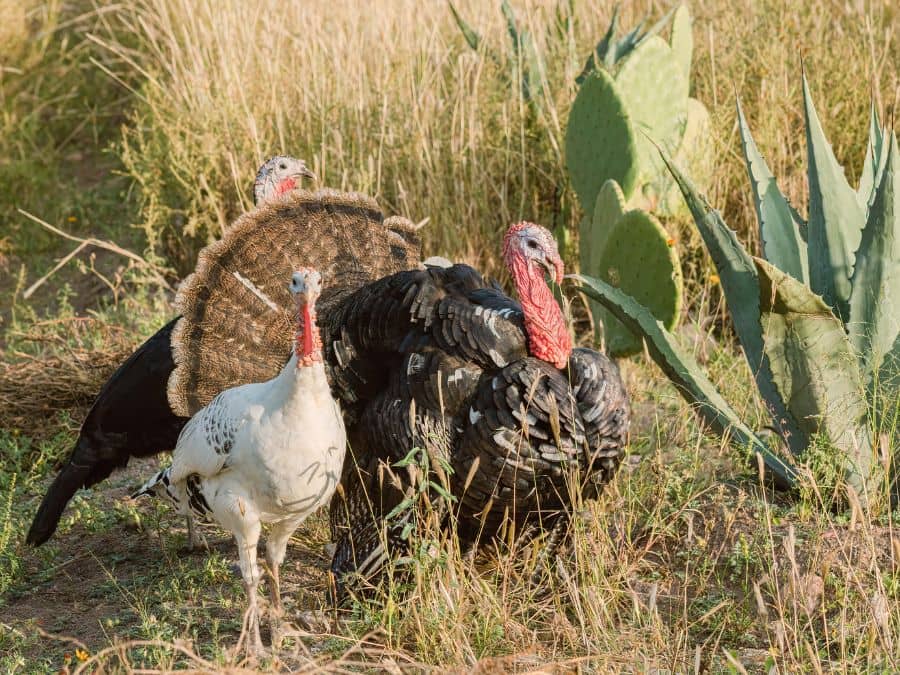
They have distinctive brown-black feathers and a fleshy, red head that can change color depending on their mood. Keep your eyes peeled while hiking in the Blue Ridge Mountains, as turkeys can be elusive creatures that blend in well with their surroundings.
Rare and Endangered Species in the Blue Ridge Mountains
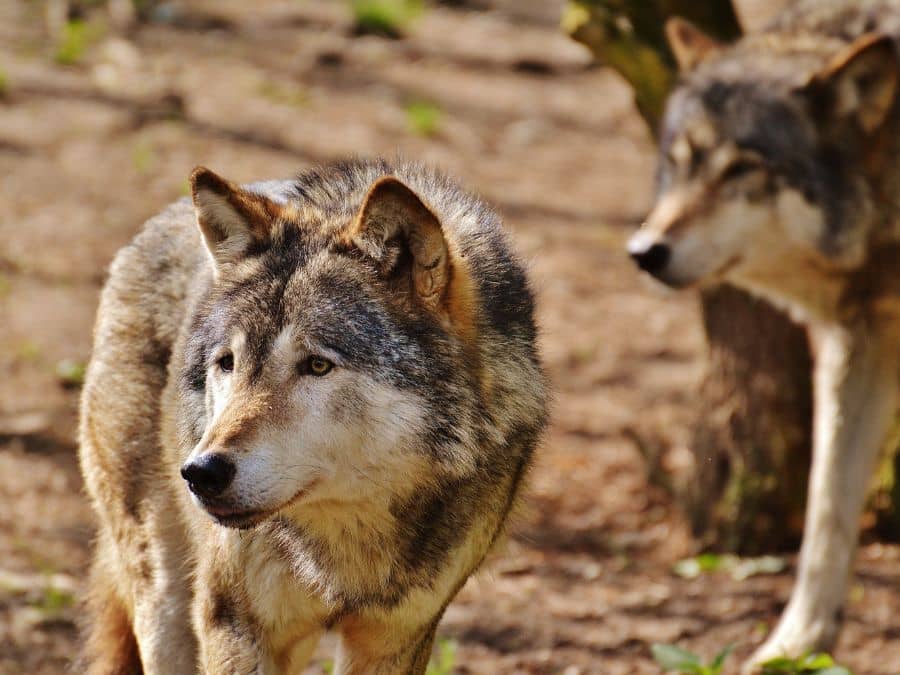
Red Wolves: The Canine Conservationists of the Appalachians
Red wolves are a highly endangered species that once roamed throughout the southeastern United States. Today, their population is concentrated in a small portion of eastern North Carolina, including parts of the Blue Ridge Mountains.
These wolves play an important ecological role by keeping prey populations in balance and promoting biodiversity. Unfortunately, habitat loss and overhunting have caused the red wolf population to plummet in recent decades.
At one point, there were only 14 known individuals left in the wild. Thanks to intensive conservation efforts, that number has since grown to around 200 wolves today.
If you’re lucky enough to spot a red wolf while hiking in the Blue Ridge Mountains, consider yourself truly blessed! These elusive creatures are shy and typically avoid humans whenever possible.
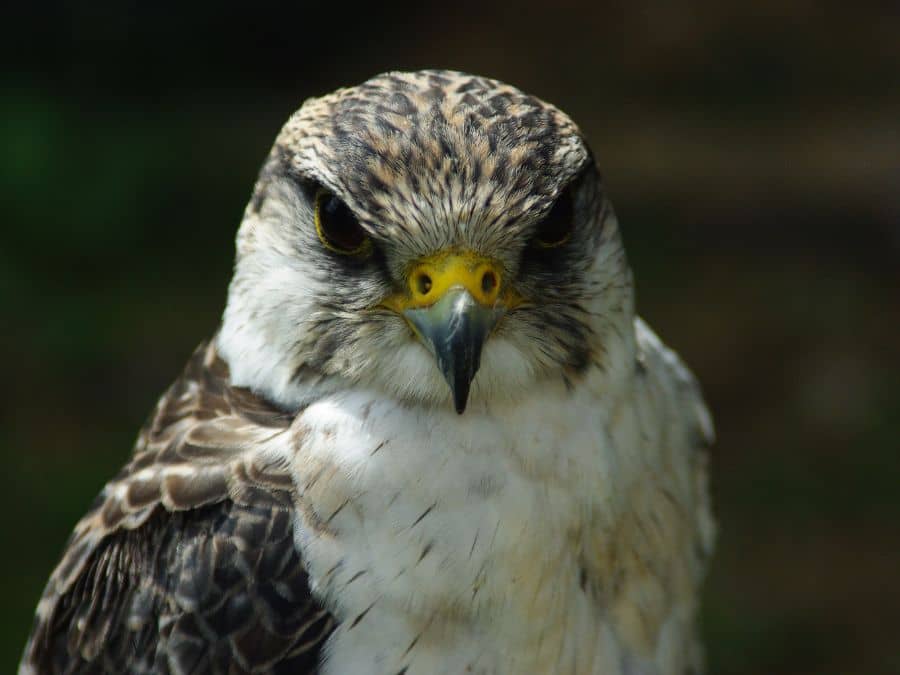
Peregrine Falcons: The Fastest Birds on Earth
Peregrine falcons are another rare species that can be found soaring high above the Blue Ridge Mountains. These majestic birds can reach speeds of up to 240 miles per hour when diving after prey – making them one of the fastest animals on earth!
Like many birds of prey, peregrine falcons were once threatened by pesticides like DDT that caused their eggshells to become thin and brittle. As a result, their populations declined dramatically throughout much of North America.
Thanks again to conservation efforts, however, peregrine falcon populations have rebounded substantially in recent years. In fact, they were removed from the US Endangered Species List back in 1999!
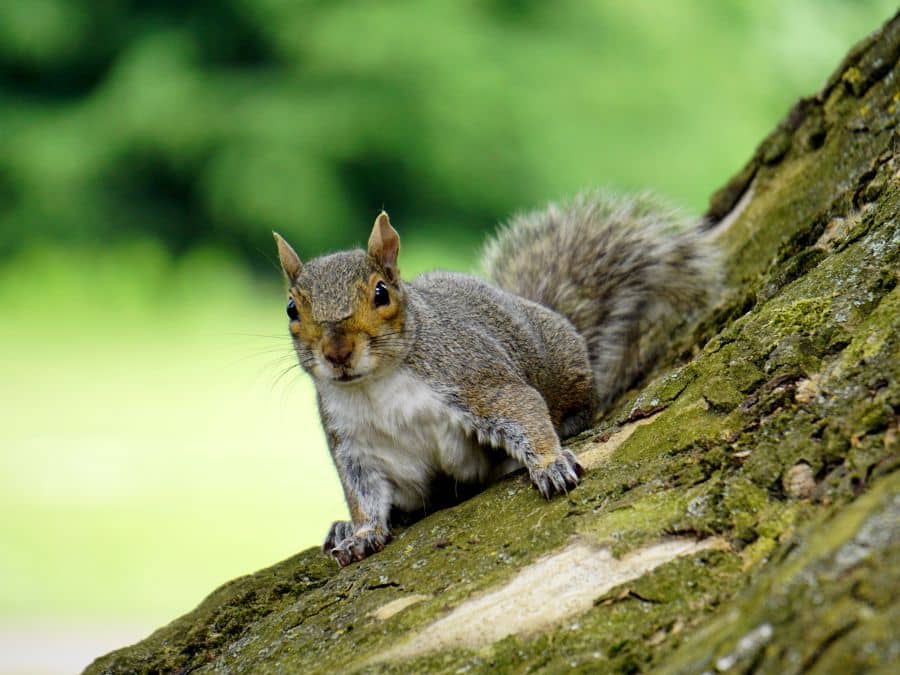
Carolina Northern Flying Squirrels: A True Appalachian Treasure
Last but not least on our list of rare and endangered species found in the Blue Ridge Mountains are Carolina northern flying squirrels. As their name implies, these adorable critters are skilled gliders that can soar from tree to tree with ease.
Carolina northern flying squirrels were once common throughout the eastern United States, but habitat loss and fragmentation have caused their populations to decline precipitously in recent years. Today, they are only found in a few isolated pockets of old-growth forest – including some areas of the Blue Ridge Mountains!
If you’re hiking in the right place at the right time, you just might catch a glimpse of one of these amazing creatures. Keep your eyes peeled for their distinctive large eyes and bushy tails!
Unique Insects and Amphibians in the Blue Ridge Mountains
Fireflies: The Magical Light Show of the Nighttime Forest

If you’re hiking in the Blue Ridge Mountains during summertime, you might be lucky enough to witness one of nature’s most magical light shows: fireflies! These little creatures, also known as lightning bugs, are famous for their bioluminescent glow. They use their light to attract mates and communicate with each other, creating a twinkling spectacle that’s sure to leave you in awe.
The firefly species found in the Blue Ridge Mountains is called Photinus carolinus. These fireflies synchronize their flashes, making it look like waves of light are moving through the forest.
They usually start appearing around mid-June and reach their peak activity between late June and early July. To see them in all their glory, head out on a warm, humid night just after sunset.
Salamanders: A Diverse Group of Cold-Blooded Critters
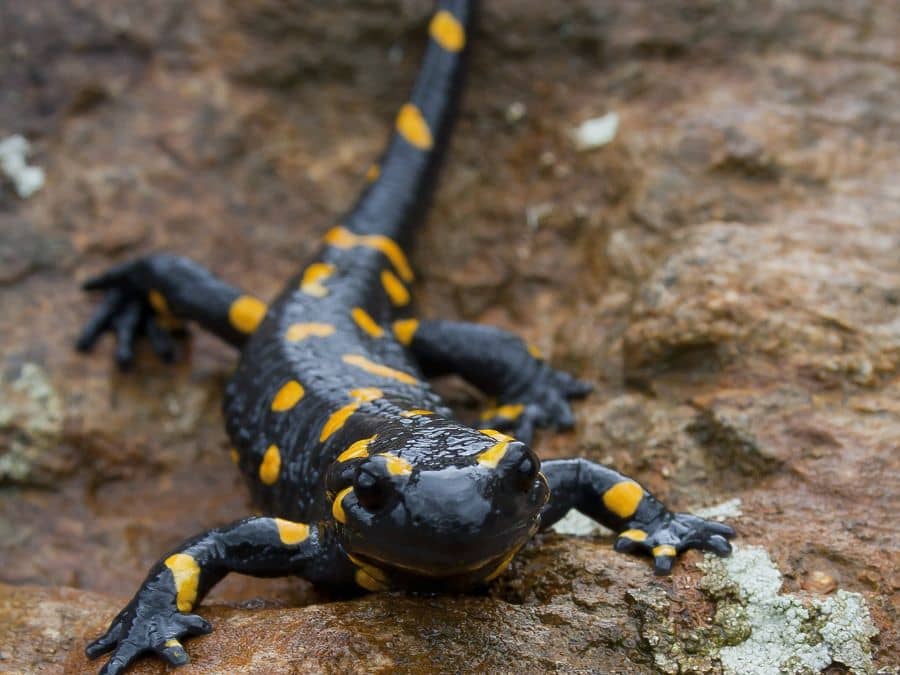
Salamanders are fascinating creatures that can be found throughout the Blue Ridge Mountains. They belong to a group of animals called amphibians, which means they spend part of their lives in water and part on land.
Salamanders come in all shapes and sizes – some are small enough to fit on your fingertip, while others can grow up to two feet long! There are over 30 different species of salamanders living in the Blue Ridge Mountains.
Some live exclusively in streams or ponds, while others prefer moist areas on land like leaf litter or rotting logs. One interesting fact about salamanders is that they have regenerative powers – if they lose a limb or tail due to injury or predator attack, they can regrow it!
Hellbenders: The Giant Salamander That Calls the Blue Ridge Home
If you’re looking for a unique wildlife sighting during your Blue Ridge Mountains hike, keep an eye out for the hellbender. This giant salamander can grow up to two feet long and is found in streams and rivers throughout the area.
Hellbenders are nocturnal, which means they’re most active at night – so your best chance of seeing one is after dark. Hellbenders may look a little intimidating with their flattened bodies and beady eyes, but they’re harmless to humans.
In fact, they play an important role in their ecosystem by feeding on crayfish, insects, and other small aquatic creatures. Unfortunately, hellbender populations have declined in recent years due to habitat loss and pollution – so if you do happen to spot one on your hike, consider yourself lucky!
Tips for Spotting Wildlife While Hiking in the Blue Ridge Mountains
Best Times to Hike for Wildlife Sightings
One of the best times to see wildlife while hiking in the Blue Ridge Mountains is early in the morning or late in the evening. This is when many animals are most active and searching for food.
Additionally, hiking during these times can provide a more peaceful and tranquil experience as there are typically fewer people on the trails. Another good time to spot wildlife is after a rainstorm.
The damp conditions often bring out insects and amphibians, which can attract predators such as birds and reptiles. Additionally, many animals come out to drink from streams or puddles after a heavy rain.
It’s important to keep in mind that wildlife can be unpredictable and sightings are never guaranteed. However, by hiking during the optimal times of day and paying attention to your surroundings, you increase your chances of spotting something special.
Importance of Staying Quiet and Still While Observing Animals
One of the most important tips for spotting wildlife while hiking in the Blue Ridge Mountains is to remain quiet and still when observing animals. Many animals have sharp senses and can easily detect human presence if we make too much noise or move around too much. When you encounter an animal on your hike, stop moving immediately and try not to make any sudden noises or movements.
This will allow you to observe more closely without disturbing them. Remember that you are entering their home when hiking through these mountains so respect their space by keeping a safe distance away from them at all times.
It’s also important not to feed any wild animal as it disrupts their natural behavior patterns that could threaten their survival. Staying quiet and still allows you not only observe more closely but also creates an environment where wild creatures feel comfortable enough with our presence so we don’t scare them away.
The Rich Wildlife of the Blue Ridge Mountains

The Blue Ridge Mountains offer an incredible opportunity to view a diverse range of wildlife. From black bears to red wolves, the mountains are home to many species that are rare or endangered.
Hiking in the area can provide a unique and exciting chance to see these animals in their natural habitat. Aside from the large mammals, the Blue Ridge Mountains also boast a variety of insects and amphibians that are unique to this region.
Fireflies light up the summer nights while salamanders and hellbenders can be found in local streams and rivers. To increase your chances of spotting wildlife while hiking, it’s important to be respectful of their habitats.
Staying quiet and still while observing animals is key, as is being aware of your surroundings at all times. The Blue Ridge Mountains are teeming with fascinating wildlife waiting to be discovered by those willing to venture into their terrain.
Whether you’re an avid hiker or just looking for a peaceful nature walk, this area offers something special for everyone. So grab your hiking boots and binoculars – there’s no telling what amazing creatures you’ll encounter on your next adventure!



